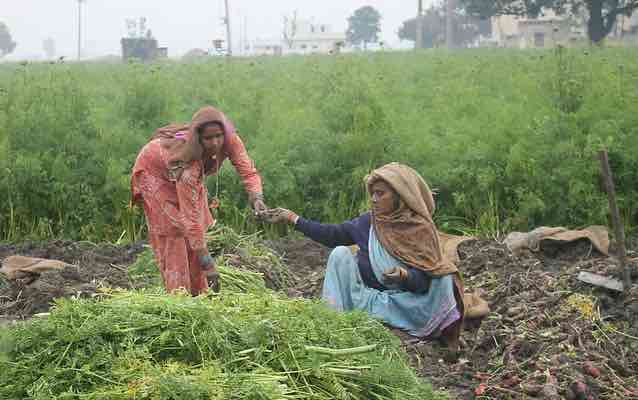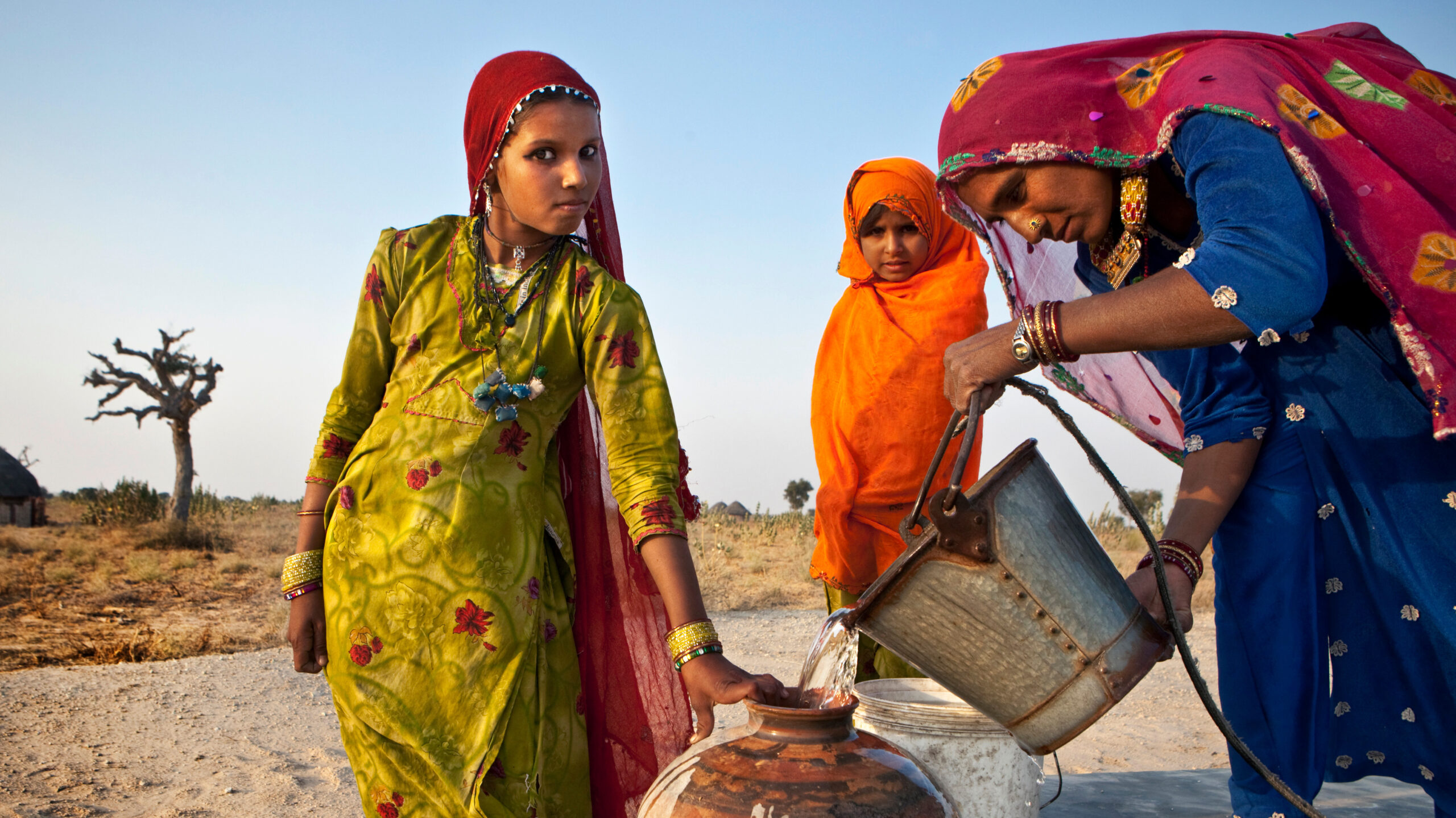Climate change is a threat to agriculture production around the world, especially for developing countries and at lower latitudes. The impacts are starting to accumulate: Climate change may have already contributed to a 1%-2% loss of crop yields per decade in the past century. Agriculture itself contributes to the problem, with yearly emissions of greenhouse gases (GHGs) accounting for about 11% of total anthropogenic emissions (not including land use change).
With close to 1 billion people still going hungry around the world, and climate challenges expected to worsen, climate smart agriculture (CSA) has been gaining attention as an approach that promises to address both adaptation and mitigation concerns. CSA is essentially a form of sustainable intensification, with an added focus on climate outcomes and tradeoffs across objectives. While considerable resources have been mobilized to promote the approach globally, CSA has been widely studied only at the farm scale, but the effects of a global-level adoption have never been analyzed.
In a paper recently published in PlosONE, we and IFPRI colleagues have for the first time quantified the potential global impact of using CSA in food-crop production. In this study, we show that four types of agronomic practices included under the rubric of CSA (no-till, integrated soil fertility management, nitrogen use efficiency, and alternate wetting-and-dry) can increase agricultural production and reduce climate-driven food insecurity worldwide—potentially placing up to 69 million fewer people at risk of hunger by 2050—while also contributing to a reduction in global GHG emissions.
In field experiments, the four practices have been shown to boost crop yields and promote greater efficiency in use of water and soil nutrients, therefore contributing to lower nitrous oxide and methane emissions per unit of output (i.e. lower emission intensity), and potentially lowering total GHG emissions. We simulated the effects of their adoption on yields across areas cultivated at rice, maize and wheat using a crop model; the impacts of changes in yields on total crop production, food prices, food security and GHG emissions were estimated by linking the crop model with the IMPACT economic model.
We created four scenarios to represent alternative adoption rates and production costs and evaluated each one of them under two possible future climate regimes. One, GFDL-ESM2M (GFDL) is drier and cooler than the other, the HadGEM2-ES (HadGEM). In addition, for each scenario we investigated the effects of poor, average, and optimal tailoring of the CSA practices to local conditions.
The first scenario (called Rule 1) assumes that CSA practices are adopted by farmers only where they provide a yield gain compared to current practices; in the second scenario (Rule 2) farmers choose the practices that decrease emission intensity the most among those that generate higher yields. In essence, these two scenarios explore the uppermost effects of CSA practice by assuming that they are adopted by farmers every time they increase yields.
Two other scenarios explore the effects of lower adoption rates and a possible reduction of production costs. The first one (called Rosegrant et al. adoption rates) assumes that farmers still select CSA technologies based on the yield-premium as in Rule 1, but that adoption is affected by production and learning costs and it is therefore lower than previously assumed (the adoption rates are based on a study by Rosegrant et al. 2014). The last scenario (called Rule 2 +AWD production costs) accounts for the fact that adoption of alternate wetting-and-dry can lower production costs in paddy rice due to a reduction in the use of water.
The figure below summarizes the main results for production and GHG emissions with bars representing the average effects, while the whiskers show poor and optimal levels of tailoring. As the figure shows, all scenarios indicate an increase in production and a reduction in GHG emissions even though the impact of CSA practices is greatly dependent on the adoption rate and on farmers’ capacity to tailor the practices their specific conditions.
The positive effects on production lead to improved food security conditions for a significant number of people. Of the estimated up to 69 million fewer people at risk of hunger by 2050, most reductions occur among at-risk populations in Africa south of the Sahara, East Asia and the Pacific, and South Asia.
GHG emissions are reduced as a global aggregate in all scenarios. Importantly, we find that the reduction in emissions is due in part to positive accumulation of soil organic carbon (SOC); the effects of SOC on retention of soil nutrients and water suggest that CSA practices can improve in the long-term sustainability of production. We estimate that the highest possible reduction is 134 megatons of carbon dioxide equivalents (Mt CO2e) per year, equal to about 17% of what is considered the economically achievable mitigation from managing cropland. This is a relevant reduction in emissions but also a “best case” scenario and admittedly difficult to achieve.
We also find that lower and more plausible adoption rates dramatically reduce the abatement benefits of CSA practices. Using the adoption rates found by Rosegrant et al, GHG emission are reduced only by about 13 Mt CO2e per year. Given these limited abatement levels, it is important that the large scale adoption of alternative production systems that are thought to reduce emissions and increase carbon storage in soils and trees is seriously considered (e.g. silvopastoral systems, agroforestry practices, precision agriculture) and that additional opportunities for abatement are explored elsewhere along the value chains.
Our findings also show how important it is to understand how changes caused by the widespread adoption of CSA practices may play out on a global scale. The indirect effects arising from the reorganization of global production can lead to larger agricultural areas being allocated to crops with a heavy carbon footprint and to an expansion in the global livestock herd due to cheaper feedstock prices. If not controlled, these effects can be large enough to limit the emission abatement effectiveness of CSA practices. In addition, we find that large changes in crop production can result in some countries experiencing an increase in their emissions even in the presence of a worldwide reduction in GHG emissions. This heterogeneous change show that global coordination of an individual country’s mitigation efforts is essential to the long term success of global mitigation plans. Such coordination should also consider the interaction between agricultural land and carbon-rich environments such as forests and peatlands to avoid emission leakage.
Recent global studies indicated that, in the near term, a strict policy of reducing GHG emissions can harm agriculture production and cause problems for the food security of millions. However, the authors focused on the effects of a global carbon tax and did not allow for the full range of production options that farmers have at their disposal, some of which can increase production and abate emissions at the same time. Our results show that even under unfavorable climate conditions the agriculture sector has options to increase food security while contributing to global mitigation efforts.
We are conscious of the fact a large scale adoption of CSA technologies and their proper implementation requires overcoming well-known barriers to adoption and substantial investments in knowledge transfer with the full support of governments and extension services. Achieving emissions reductions is also a delicate balance. Increased efficiency through intensification is often an incentive to expand cultivation, and this this could offset most of the CSA benefits. Therefore, as agriculture faces stronger pressure to limit emissions, intensification efforts may have to be combined with policies and counter-incentives to encourage land-sparing and protect natural habitats from encroachment.
We hope these results will be compared and validated using other models, perhaps following in the steps of recent model inter-comparison efforts managed by the AgMIP group.
Alessandro (Alex) De Pinto is a Senior Research Fellow and Nicola Cenacchi a Senior Research Analyst with IFPRI’s Environment and Production Technology Division.
This work was supported by two CGIAR Research Programs: Policies, Institutions, and Markets (PIM) and Climate Change, Agriculture, and Food Security, which are carried out with support from CGIAR Fund Donors and through bilateral funding agreements.







